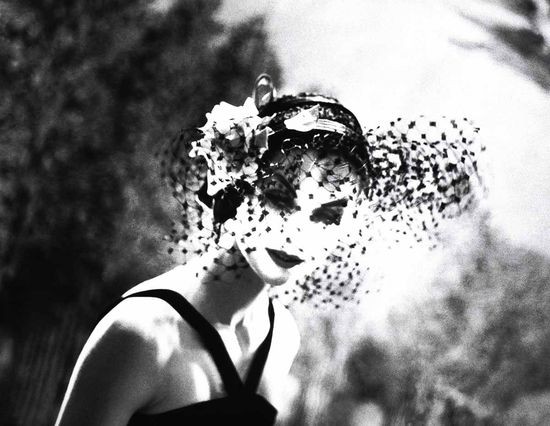Lilian Bassman in Berlin
02/07/2017

CAMERA WORK is thrilled to present an exhibition of phptographs by Lillian Bassman: More than 50 pieces of her ouvre are shown for the first time in this form in Germany since her demise in 2012.
Bassman´s impact on fashion photography as we see and know it cannot be underestimated:
Even her course of career is exceptional:
Born in 1917 in Brooklyn, Lillian Bassman worked as an artist's model, a textile designer, and a fashion illustrator before joining Harper's Bazaar in 1941. She lived and worked in New York until her death in 2012. Solo exhibitions of her photographs have been presented in London, Los Angeles, Madrid, Munich, New York, and Paris. In 1996, Bassman received the Agfa Life Time Achievement Award and the Art Directors Club Award.
A seminal figure in the history of fashion photography, Lillian Bassman's photographs appeared on the pages of Harper's Bazaar from the late 1940s through the 1960s. She trained and worked under famed art director Alexey Brodovitch, eventually becoming art director of Junior Bazaar in 1945, until the magazine's closure in 1948. While working as art director, Bassman regularly hired photographers such as Richard Avedon, Arnold Newman, and Robert Frank. By 1946, Bassman began taking her own photographs and swiftly transitioned from art director to fashion photographer. Her first photograph was published in Bazaar in 1947 and her first editorial story in 1948.
Her style is one-of-a-kind: Known for blurred silhouettes, exaggerated gestures, and unusual compositions, Bassman's photographs illustrate the mystery and glamour of the modern woman. Transforming her images with bleaching and toning techniques in the darkroom, she introduced a new aesthetic and revolutionized fashion photography. "I tried to make my pictures soft and flowing," Bassman explained, "I was never interested in the straight print."
And then the turning point: In the early 1970s, after decades as a successful fashion photographer, she became disillusioned by the state of the commercial world of fashion photography. Bassman stopped taking assignments, left the industry and even destroyed most of her negatives and prints. Fortunately, an assistant had stored a collection of negatives of Bassman’s brilliant early work in her Upper East Side carriage house were they remained hidden for twenty years. They were found in the 1990s by a friend who suggested that Bassman look at the images again. She did, and began reinterpreting them, using the darkroom and later the computer, to change the original framing, accentuate contrast and image softness, and retouch the background. These singular works led to a renewed interest in her photography among editors, curators, and collectors
Her images have been reproduced in multiple monographs including Lillian Bassman: Lingerie (2012), Lillian Bassman:Women (2009), and Bassman and Himmel, which accompanied a major retrospective at Haus der Photographie Deichtorhallen Hamburg in 2009. Bassman's photographs are held in major public and private collections worldwide.
more information: www.camerawork.de


